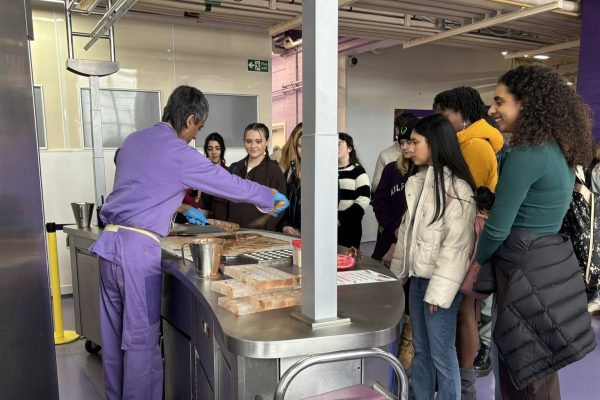Why we need to trust children with AI
Let it be whispered, we are entering a new era where your phone is cleverer than your entire family, your fridge might be monitoring your every move and artificial intelligence is making headlines faster than you can say ‘Elon Musk’. Suddenly, only 18 months on from the release of Chat GTP, the future is here and it has a slight whiff of the dystopian about it. But don’t worry, I hope to persuade you that digital skills are essential for the future, and of why we absolutely must trust our children to use the power of AI for good. Spoiler alert: If we don’t, we might just end up in a world where AI is controlled by people with the moral compass of a pantomime villain.
I remember the days when even knowing how to send an email made you something of a tech guru. At university in the early 90’s the web was a text-based quagmire that required ninja-like coding skills just to access. Well, those days are long gone. Today’s digital world is all around us and is not just for geeks in their bedrooms anymore; tech skills are ever present in the modern workplace. Even your local barista is probably dabbling in Python between lattes and your hairdresser may have a side hustle on TikTok bringing in cash and kudos in equal measure.
But why are these skills so crucial? It’s simple: the digital world is the real world now. Every industry, from agriculture to zoology, is being transformed by technology. If our children can’t navigate this new landscape, they risk being left behind, and it is our responsibility to ensure they can make the most of the wonderful tools available to them.
Of course, many young people are naturals with technology. They can multitask across devices and they understand social media algorithms better than we understand our tumble dryer programmes. I would also argue that with a little encouragement and some skills development, they have the creativity and curiosity to push AI in directions we haven’t even dreamt of yet. And, yes, we need to trust them to do just that.
Children have an innate sense of fairness, justice, and (at the High School at least) a propensity to question the status quo. I would say that these are exactly the qualities we need in the people who are shaping the future of AI. There is a danger that if we leave AI development solely to those with dubious intentions or an anti-democratic agenda, we’re letting the fox guard the henhouse.
Nell Watson is President of the European Responsible AI Office and in her recent book, Taming the Machine, she speaks of how AI promises to transform our world, supercharging productivity and driving new innovations. Her focus is on how we can responsibly harness the power of AI. Indeed, if we can encourage young people to do this the possibilities are endless – and endlessly positive. Imagine an AI developed by a teenager who’s passionate about the environment, which could help predict climate change patterns, suggest sustainable farming practices, or even develop new recycling technologies. Consider an AI program created by a young person dedicated to social justice, that could identify biases in recruitment processes, or ensure fairer distribution of resources to help address social inequalities.
By empowering our children with the knowledge and tools to create AI, we’re not just giving them career opportunities, I believe we’re giving them the chance to shape a better world. They can address issues we’ve been struggling with for decades, from poverty to healthcare, with innovative solutions that are both effective and ethical. Of course, though, trusting children with AI is worrying; it’s new, it’s powerful, and it’s fraught with potential problems. Teachers and families justifiably worry about how access to AI might tempt pupils to cheat in assessments or, at the very least, resort to time-saving approaches in their learning that impede their understanding of key academic areas. But think back to every technological leap we’ve made. The printing press, the telephone, the electronic calculator, the internet… Each came with its own set of dire warnings of impending disaster and yet today they form an integral part of our shared human experience.
As you might expect me to say, the key is education and guidance. We need to equip our children with not just the technical skills, but also the ethical framework to use AI responsibly. At the High School we have recently created a new post of Edtech Champion, in the form of our very own Mrs Hopley. She will be working closely with teachers and pupils across the Digacy programme in school and can call on experts in the GDST for support if needed. We incorporate AI ethics into our curriculum via the Transferrable Skills course in Key Stage 3. And perhaps most importantly of all, our educational values encourage creativity, curiosity and critical thinking, and we promote a culture of transparency and learning from our mistakes.
The future is digital, and we would be well advised to embrace it, and to trust the next generation to steer us in the right direction. By teaching our children to master digital skills and AI, we’re ensuring that the power of technology is used for good – and that it remains a tool for democracy and equality, not a weapon for control and division.
References
Watson, N (2024), Taming the Machine: Ethically Harness the Power of AI, Kogan Page
Mr Rickman
Deputy Head Academic




